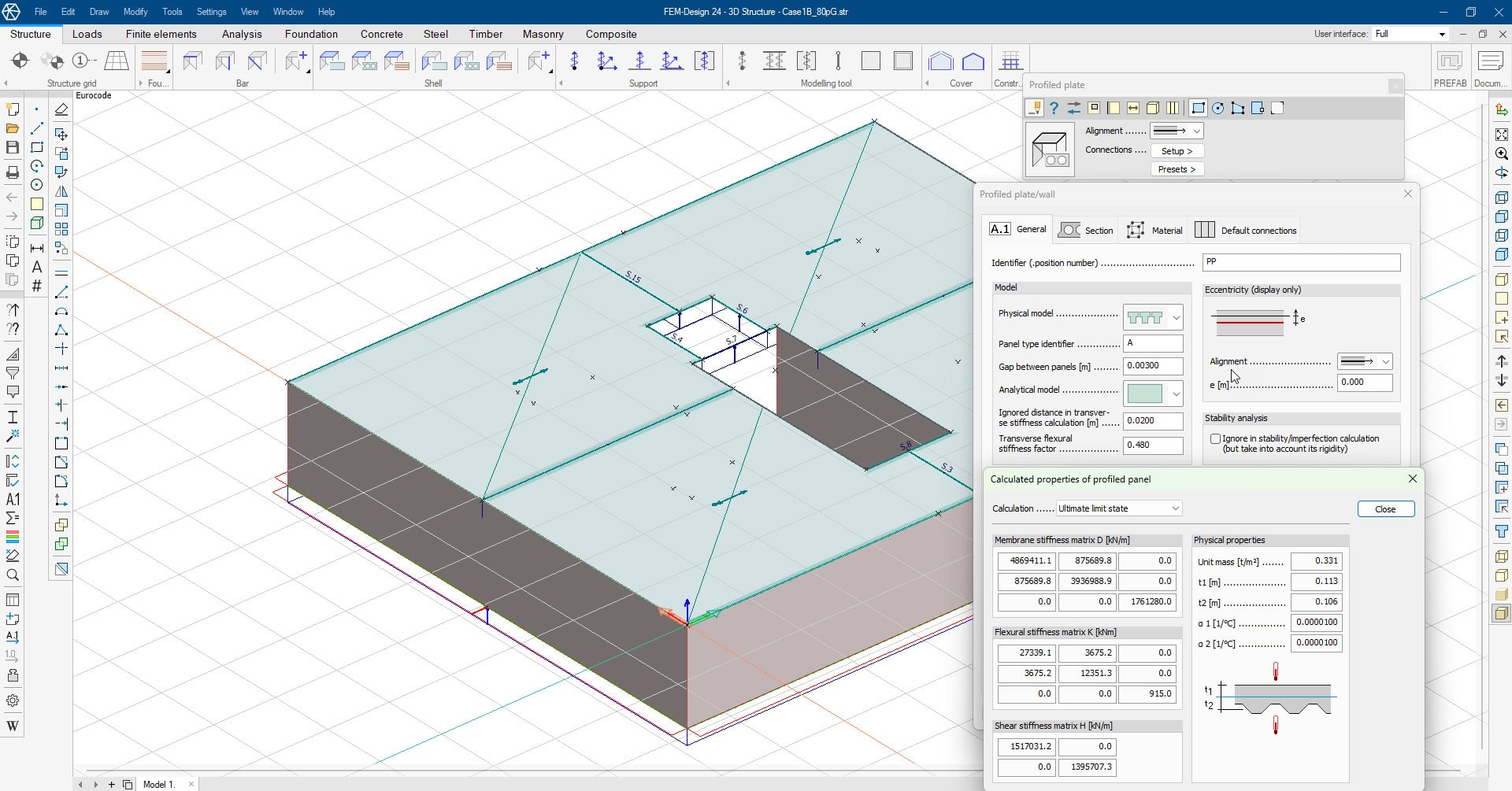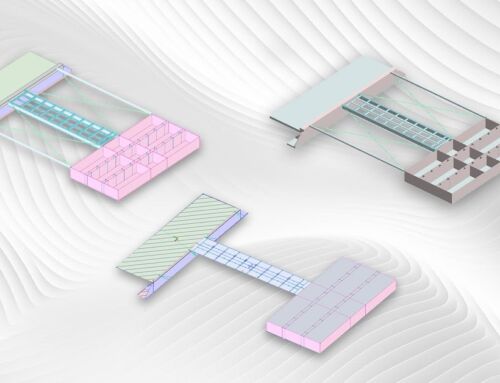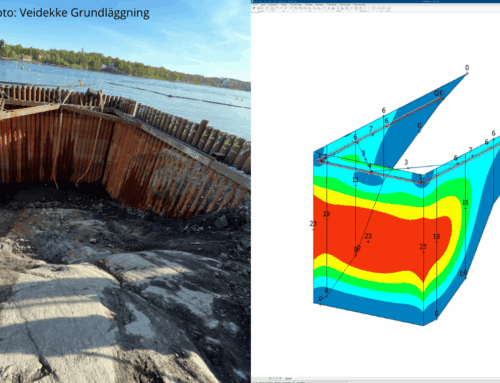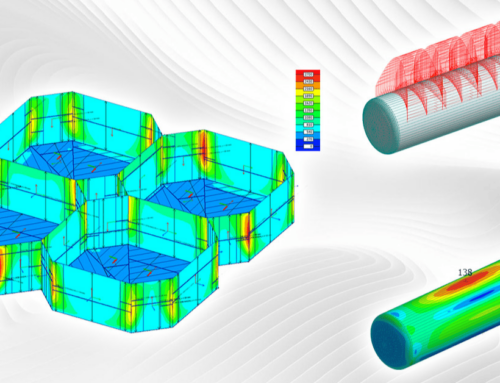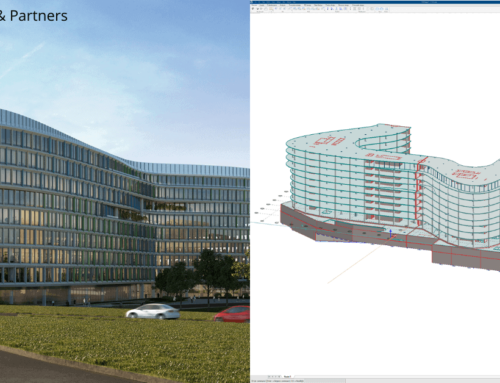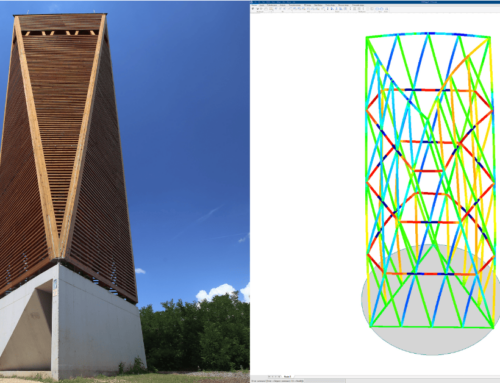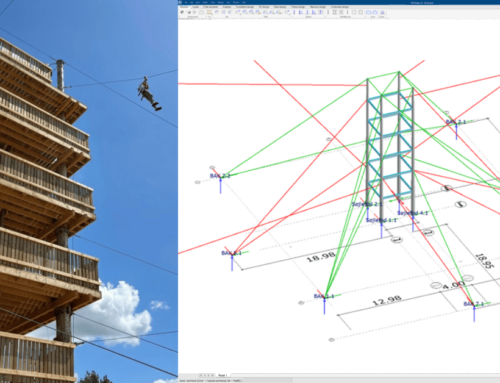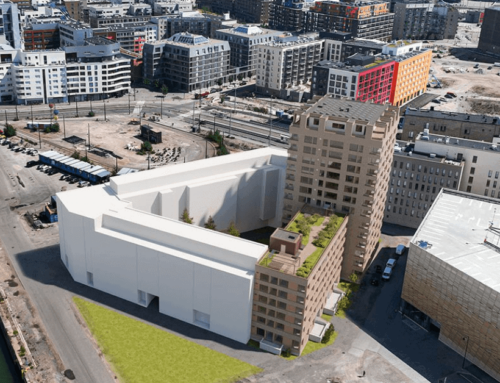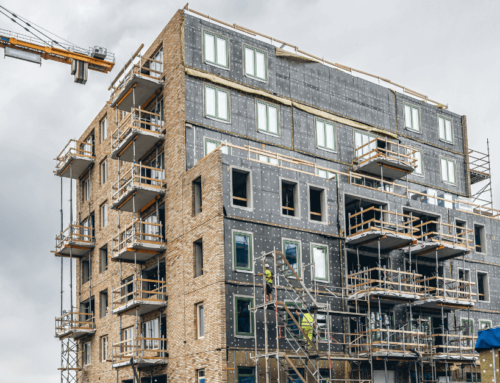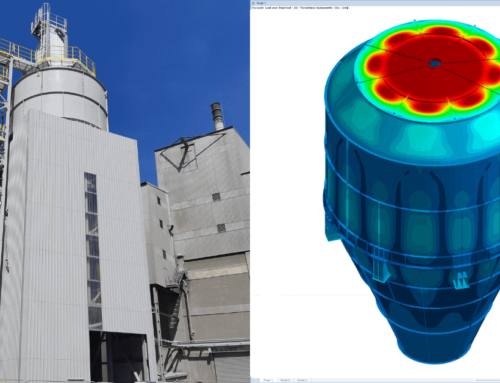A new residential development in Denmark required a precise vibration analysis to ensure both comfort and compliance with structural standards. Jonas Syders Knudsen, founder and structural dynamics specialist at JSK Vibrations, was brought in to assess the dynamic behaviour of the building’s hollow-core floor decks. Using FEM-Design, Jonas delivered a detailed finite element analysis that enabled the contractor to reduce deck thickness while maintaining vibration performance, resulting in a more efficient and cost-effective solution.
Project overview:
The project involved a multi-storey apartment building with a repetitive floor layout. Initially 270 mm-thick hollow-core decks were proposed to meet vibration requirements. However, Jonas was tasked with evaluating whether thinner 220 mm decks could be used without compromising comfort or performance. The hollow core decks spanned up to 9.6 m.
The hollow-core decks exhibit orthotropic behaviour, meaning they are stiffer in the longitudinal direction than in the transverse direction. Accurately modelling this behaviour was essential to predict the structure’s dynamic response under realistic loading conditions.
Jonas used FEM-Design to build a detailed 3D model of the floor system, incorporating correct stiffness values, geometry, and load distribution, including higher loads in bathrooms compared to living areas. The goal was to determine whether the thinner deck could meet the vibration criterion. Thinner decks is beneficial to reduce structural height, simplify installation, and ensure compliance with city planning requirements.
Engineering challenges:
- Orthotropic stiffness modelling: The hollow-core deck’s longitudinal and transverse stiffness is modeled based on verified research.
- Boundary condition control: Accurate representation of support conditions was crucial for reliable results.
- Load realism: Transitioning from conservative ULS loads to realistic serviceability loads was key to meeting vibration limits.
- Client expectations: The contractor preferred thinner decks for architectural and installation benefits, but needed assurance of performance.
Why JSK Vibrations chose FEM-Design:
Jonas has been using FEM-Design exclusively for over six years, relying on its versatility and user-friendly interface to handle all his finite element needs. For this project, FEM-Design’s ability to model orthotropic shell elements and perform eigenfrequency analysis was critical.
“FEM-Design is the only software I use because it can solve all my finite element needs. It’s intuitive, accurate, and gives me full control over stiffness and boundary conditions,” he explains.
FEM-Design’s impact on workflow:
From the early design phase, JSK Vibrations integrated FEM-Design into the project, enabling fast turnaround and confident decision-making.
– Efficiency gains:
Jonas completed the analysis within seven days, helping the structural engineer and contractor conclude that 220 mm decks were viable.
– Material optimisation:
Thinner decks reduce structural height and improve installation flexibility without sacrificing vibration comfort.
– Higher accuracy:
FEM-Design allowed Jonas to simulate realistic loads and boundary conditions, avoiding over-conservative assumptions.
– User-friendly interface:
The ability to easily input and verify stiffness values gave Jonas confidence in the model and results.
“The eigenfrequency analysis in FEM-Design is excellent. I get the natural frequencies and modal masses, and then I can calculate accelerations to compare with vibration requirements,” Jonas added.
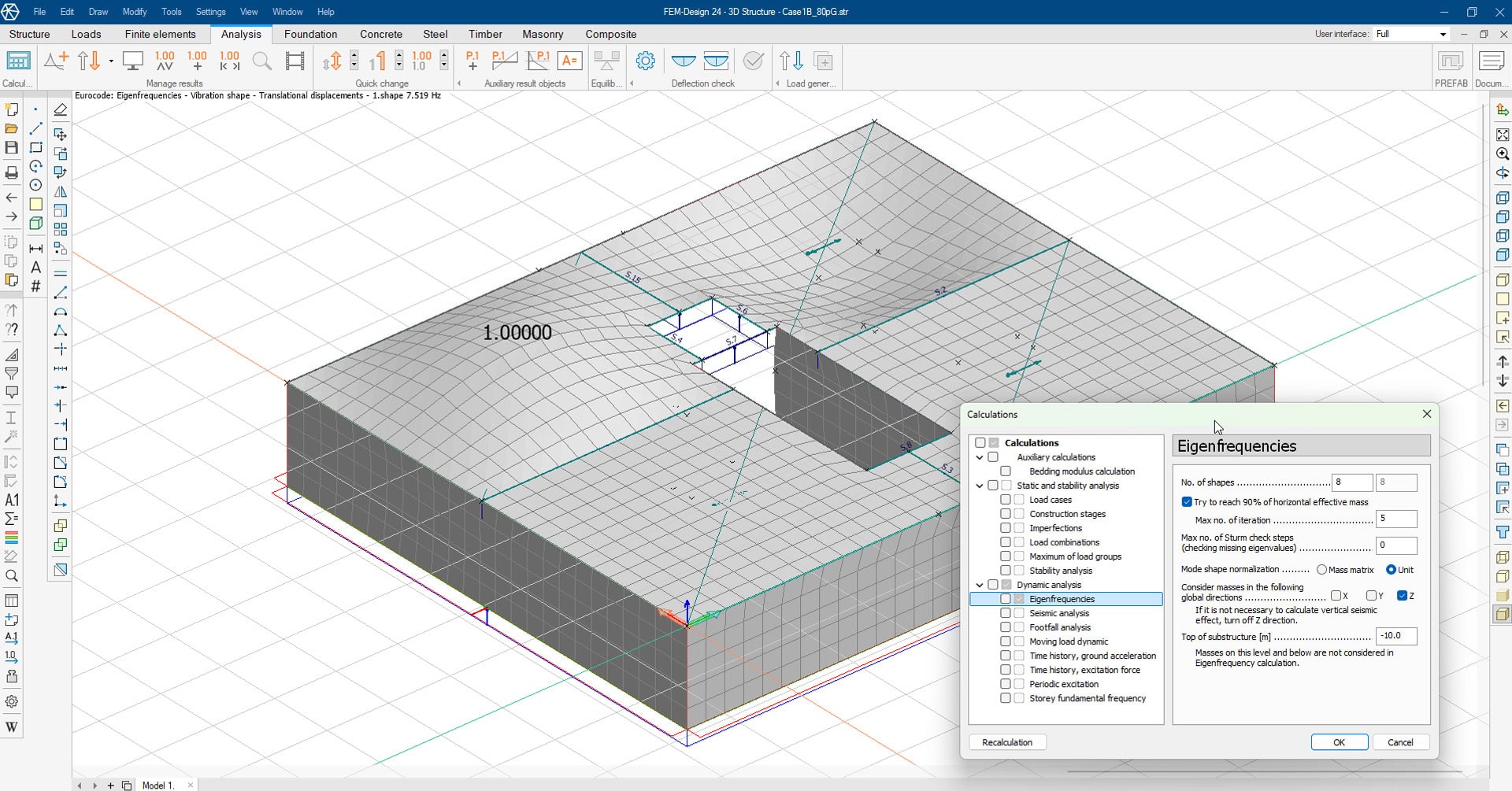
Eigenfrequencies analysis in FEM-Design
Client testimonial:
“FEM-Design makes vibration analysis straightforward. I can model orthotropic behaviour, control boundary conditions, and get accurate results quickly. The support team is also fantastic. I get fast replies and deep expertise, especially in niche areas like dynamic analysis.”
— Jonas Syders Knudsen, Founder & Engineer, JSK Vibrations.
Client portrait:
JSK Vibrations is a Danish engineering consultancy specialising in vibration analysis of load-carrying structures such as floor decks, staircases, and balconies. The company offers vibration measurements on structures and structural parts (floors, stairs, walkways, balconies, chimneys, wind turbines, etc.), as well as calculation and assessment of vibrations in the pre-construction phase for both residential and commercial projects.
